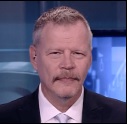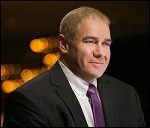By Pam Martens and Russ Martens: June 18, 2020 ~
As corporate-friendly Republican members of the Senate Banking Committee and House Financial Services Committee engaged in effusive praise at hearings this week over the efforts of Fed Chairman Jerome Powell to quickly establish a plethora of corporate bailout facilities, the voices of Wall Street veterans have struck a different chord. These long-term market watchers are warning that the Fed has created an unprecedented stock market bubble that is destined to end badly.
Earlier this week, CNBC anchor Melissa Lee interviewed Sven Henrich, the Lead Market Strategist at Northman Trader. Henrich savaged the Fed’s recent interventions in the market, stating the following:
“The Fed really has created a massive asset bubble here in the last few months. The lender of last resort has become the lender of the entire resort. And no red line shall remain uncrossed.
“The Fed has basically created a gambling casino at this point. And all the gamblers have moved in. From my perspective, the danger here is that the Fed is overdoing it and zombifying the economy. They’re in the process of inserting itself ever deeper into markets. And that makes the Fed itself too big to fail. And the Fed losing control over the asset bubble is now the biggest risk factor to the economy. Remember Alan Greenspan mentioned if markets drop 10 percent that impacts GDP growth by 1 percent.
“So now we’ve had this massive rally, which still could be a bear market rally by the way, and after prices have reached levels that we’ve rarely ever seen. Let me give you two examples here. Specifically, one is market cap to GDP and I know Guy has mentioned this on the show before. There’ve only been two periods in history where the markets have disconnected so far from the economy that it’s reached levels of 150 percent and higher. One of those eras was the Nasdaq bubble in 2000 and the other one, ironically, was the February 2020 top – because, obviously, the Fed had already printed significant amounts of money in 2019 with their repo operations.”
Let’s pause here for a moment and talk a little about that February top. The huge rally in the market that occurred between October 8 of last year and February 19 of this year was solely built on Fed money. There was a liquidity crisis occurring in the market which would have resulted in a stock market crash, not a rally. When short-term interest rates on loans to financial firms want to skyrocket from 2 percent to 10 percent, as occurred on September 17, you’ve got a financial crisis on your hands, not the making of a new bull market. The Fed changed history by jumping with both feet into the overnight lending market, known as the repo market or repurchase agreement market, and started pumping hundreds of billions of dollars a week into the trading houses of Wall Street. According to the Fed’s December 10-11 meeting minutes, its emergency repo loans amounted to “roughly $215 billion per day” flowing at super cheap interest rates to the trading houses on Wall Street. That tallied up to approximately $6.23 trillion cumulatively in loans in a matter of a few months. By March 14, the Fed had pumped more than $9 trillion cumulatively into the trading houses of Wall Street, which it calls its “primary dealers.”
Typically, secular bear markets following a stock market bubble erase at least 50 percent of the prior bull market from peak to trough. At Wall Street On Parade, we don’t think the starting point for that retracement should be February 19 – because that rally was an artificially engineered rally by the Fed. We think the measure for a 50 percent retracement in the S&P 500 should be October 8, 2019 when the S&P 500 closed at 2893. That would put a 50 percent retracement at 1446.5 or 58 percent from where the S&P closed yesterday.
This assessment, of course, is based on a free-functioning market, which we clearly do not have today with the Fed now buying hundreds of billions of dollars of junk bonds, Exchanged Traded Funds, commercial paper, money market paper, asset-backed paper, mortgage-backed paper, Treasuries and on and on. With that as background, let’s return to the interview with Sven Henrich.
Henrich continues:
“So we ran into this COVID crisis massively extended from an economic perspective. So we’re here now and this is really fascinating: last week, June 8, we actually hit 152 percent market cap to GDP. And just to put this into perspective, typically what you see inside of a recession is that there’s a discounting process for assets. And, actually, in 2000 to 2007, we dropped to 50 percent to 75 percent market cap to GDP. So to be inside of a recession and at these extreme market valuations we’ve never seen before, congratulations, I guess the Fed just managed to do something unprecedented: manufactured the first asset bubble inside of a recession.”
You can watch the full video here.
On Wednesday, CNBC’s Wilfred Frost interviewed the legendary investor Jeremy Grantham, co-founder and Chief Investment Strategist at money manager Grantham, Mayo, Van Otterloo & Co., which goes by the unfortunate acronym of GMO. Grantham had correctly called out the market as being overvalued in both 2000 and 2007. On the current rapid runup in the market, Grantham had this to say:
“It is a rally without precedent. The fastest in this [amount of] time ever and the only one in the history books that takes place against a background of undeniable economic problems. All of the other ones took place at a time when the market at least believed that things were great. They may have been wrong, on occasion, but they believed at the time that everything economic and financial was terrific. And this time everyone agrees that the economics have a major problem.”
Grantham is then asked by Frost for his opinion on what has caused this giant rally. Grantham answers:
“Clearly the Fed scattering money around has created a favorable environment as it often does and with this amount of money slopping around and with the economy depressed it would be fairly traditional for some of the money to find its way into the market.”
The next question for Grantham is if the market deserves a higher price-to-earnings ratio as a result of both the Fed and other central banks’ interventions in markets. Grantham answered this way:
“No, I think the last five or ten years received pretty intense loving care from the Fed. And I don’t think it can do much better than that.”
Grantham also compared this bubble to those in past history, stating this:
“This is the really the real McCoy. This is crazy stuff. And I’m talking about not the last three or four months but the last few weeks. We’ve now reached a level where you buy bankrupt companies; you issue stock in bankrupt companies that will probably be used to pay off the bondholders; and you bid up favorite companies to ludicrous levels. This is really the real McCoy. And in that kind of event like 1929 or 2000, you want to see as much participation by screaming leaders of wild investors as you can possibly see. And that should make any bear feel better.”
As for how long this bubble can last, Grantham offered this:
“The great bubbles can go on a long time and inflict a lot of pain but at least I think we know now that we’re in one.”
Frost then asked Grantham if investors should have zero money in stocks. Grantham likely shocked a lot of viewers with this assessment:
“I think a good number in the U.S. would be zero. And less than zero might not be a bad idea if you can stand that [meaning to go short].”
On Tuesday, CNN interviewed Scott Minerd, Global Chief Investment Officer at Guggenheim Partners. Minerd said that the market is trading at price-to-earnings multiples reminiscent of the internet (dot.com) bubble. He said he expects the S&P 500 to drop to the 1600s level over the next month. If the market traded back to 1600, that would be a 49 percent drop from where it closed yesterday.
Minerd also said that “there’s a point where the Federal Reserve is going to have to pull out a bazooka in order to maintain credit spreads and I think the option of buying stocks on the part of the Fed is on the table.”
With so many sage market veterans warning about the Fed’s folly of trying to become the markets, should the Fed have the temerity to start buying stocks, that might actually look like the last gasp of a desperate Fed and scare sophisticated money out of the market.
In the U.S., approximately 85 percent of stocks are owned by the wealthiest 10 percent. At a time when the Fed is under pressure from Democrats in Congress to create a more level playing field in the U.S. in terms of wealth and income equality, a Fed move to buy stocks could bring out the pitchforks – something that is increasingly furrowing the brows of America’s billionaire class.




